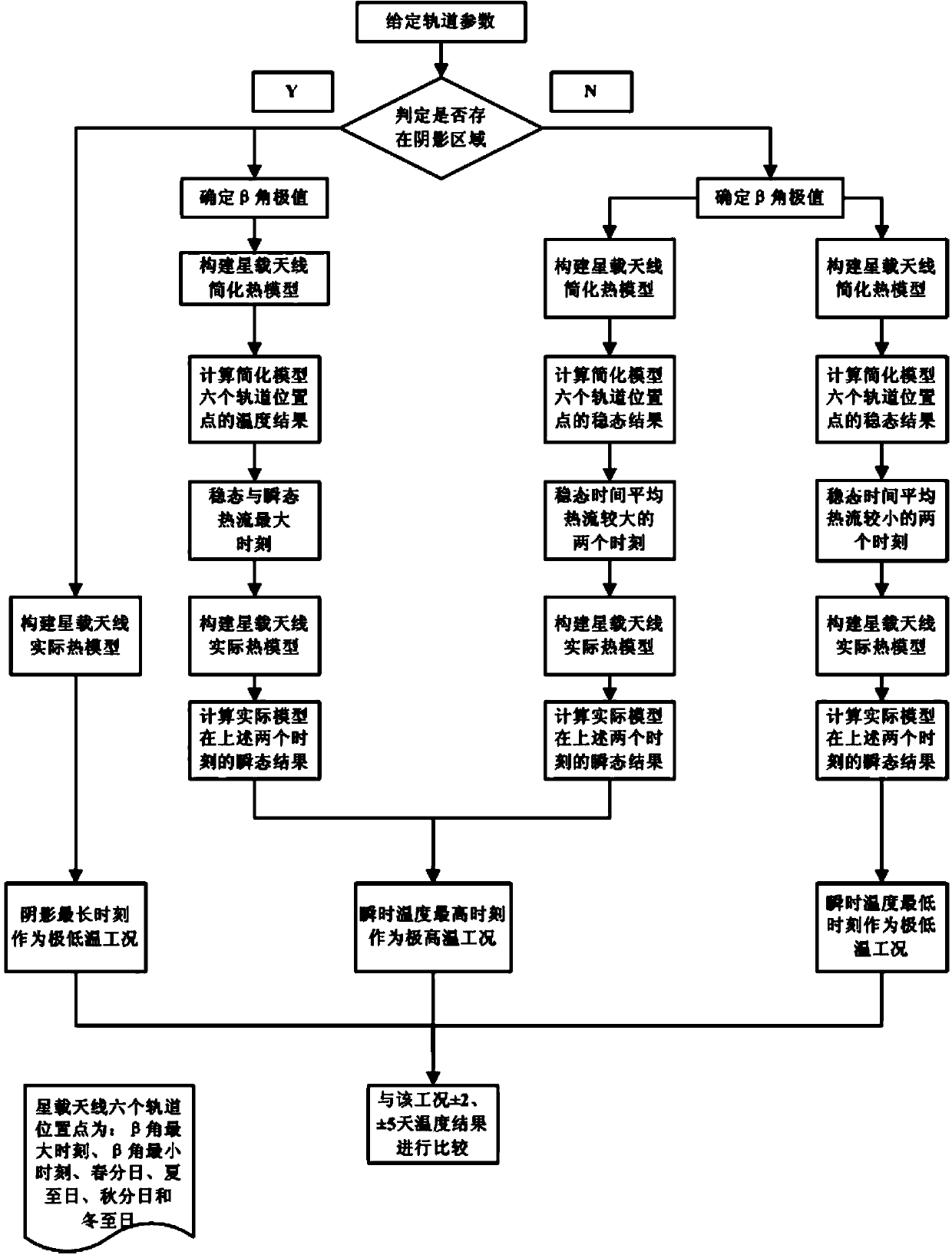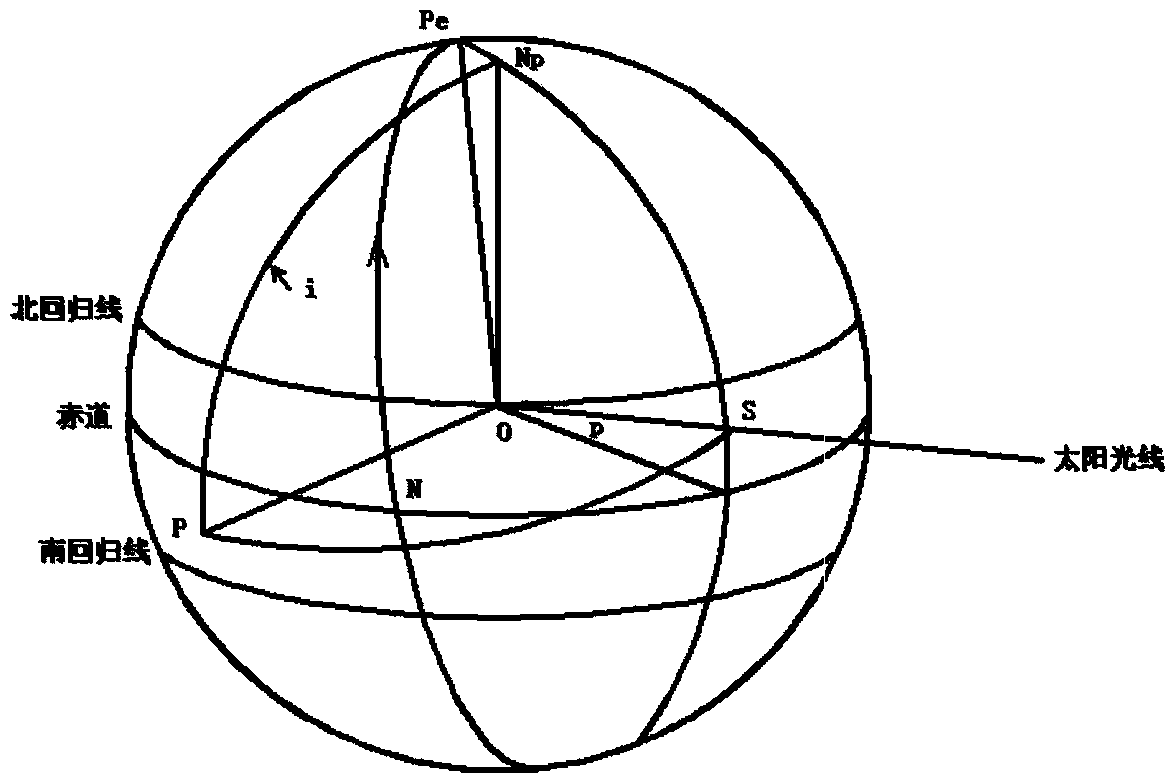Method for forecasting extreme working conditions of in-orbit temperatures of spaceborne antenna
A technology of a spaceborne antenna and a prediction method, applied in the aerospace field, can solve the problems of the temperature change of the spacecraft surface, the failure of the satellite to work normally, and the failure.
- Summary
- Abstract
- Description
- Claims
- Application Information
AI Technical Summary
Problems solved by technology
Method used
Image
Examples
Embodiment Construction
[0064] The present invention will be further described below in conjunction with the accompanying drawings.
[0065] refer to figure 1 As shown, the extreme working condition prediction method of the on-orbit temperature of the spaceborne antenna, the steps are as follows:
[0066] (1) Through the given orbital parameters of the spaceborne antenna, calculate the change law of the incident angle β angle of the sun's rays relative to the orbital surface of the spaceborne antenna within a year, as shown in Figure 2-5 shown. The parameters involved include the date of interval with the vernal equinox t, the angle of intersection ε, orbital height H, orbital inclination i, eccentricity e, and the local time of descending node t 0 , the orbital period T, the difference in right ascension of the ascending node of the orbit and the flat sun γ′, the difference in right ascension between the ascending node and the true sun α, the difference in right ascension of the true sun and the ...
PUM
 Login to View More
Login to View More Abstract
Description
Claims
Application Information
 Login to View More
Login to View More - R&D
- Intellectual Property
- Life Sciences
- Materials
- Tech Scout
- Unparalleled Data Quality
- Higher Quality Content
- 60% Fewer Hallucinations
Browse by: Latest US Patents, China's latest patents, Technical Efficacy Thesaurus, Application Domain, Technology Topic, Popular Technical Reports.
© 2025 PatSnap. All rights reserved.Legal|Privacy policy|Modern Slavery Act Transparency Statement|Sitemap|About US| Contact US: help@patsnap.com



